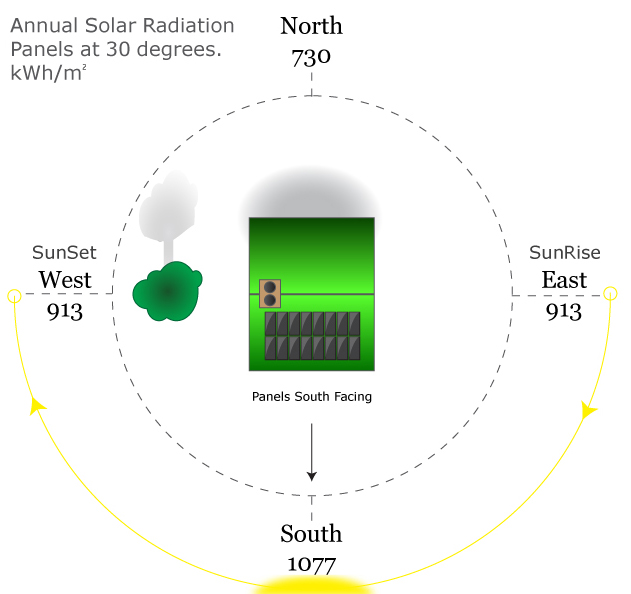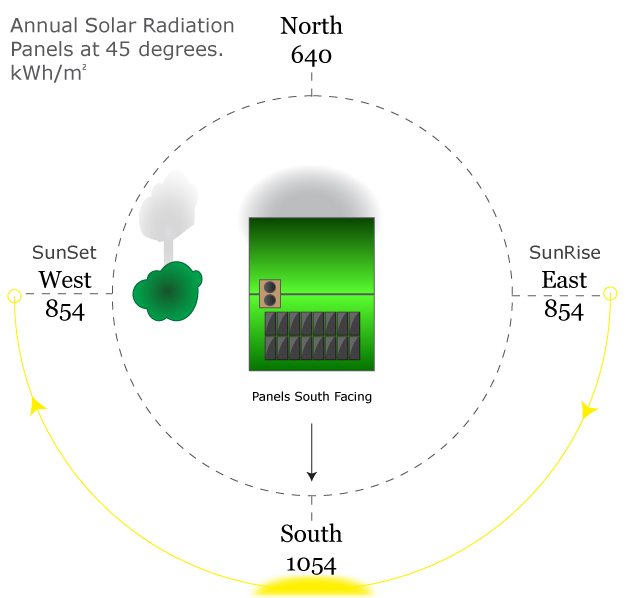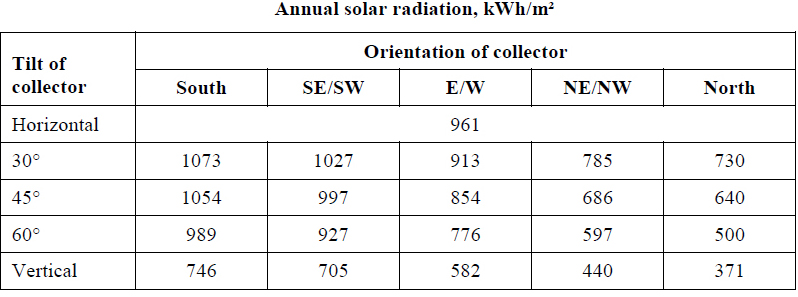Solar Panel Orientation
Orientation of your property is very important in being able to figure out what your solar panel system will produce. The government have something called a SAP calculation(Standard Assessment Procedure) and there is one for solar PV and solar thermal systems.
Both of these take into account the orientation of the panels that you propose to fit, the figures of what the panels produce will change depending on this. First thing to take into account is which way the panels will face.
 If you look at the diagram above (4kW system – 16 x 250w panels) you will see that the optimum direction is south. There is not a massive drop production if they where facing East or West, but the further off south you go the figures will come down slightly. If you go round to North then you can see there is a significant drop in production. The figures installers give you will be based on its nearest directional point, either:
If you look at the diagram above (4kW system – 16 x 250w panels) you will see that the optimum direction is south. There is not a massive drop production if they where facing East or West, but the further off south you go the figures will come down slightly. If you go round to North then you can see there is a significant drop in production. The figures installers give you will be based on its nearest directional point, either:
- South
- South East/West
- East/West
- North East/West
- North
Next is the pitch, a factor in production too, whether it be the pitch of the roof or the bracket you are fixing the panels too (flat roof). The optimum pitch is around 30 degrees and you will see that in the diagram above it mentions the panels being at that pitch with the direction they are facing.

You can see the roof to the right is 30 degrees, the optimum but the left roof is at 45 degrees. If we changed the roof pitch to 45 degrees in our first image above it would now look like this (see below – figures come down). If we change the pitch higher or lower, so the figures change.
As you can see the pitch of the panels and there direction make changes to what they will produce. Below is the table for calculating the solar panel annual kWh/m2 (kilowatt hours per square meter) set out by the governments SAP calculation. Don’t worry to much about this as not many people are spot on south at 30 degrees, we are just showing you how it is worked out.



